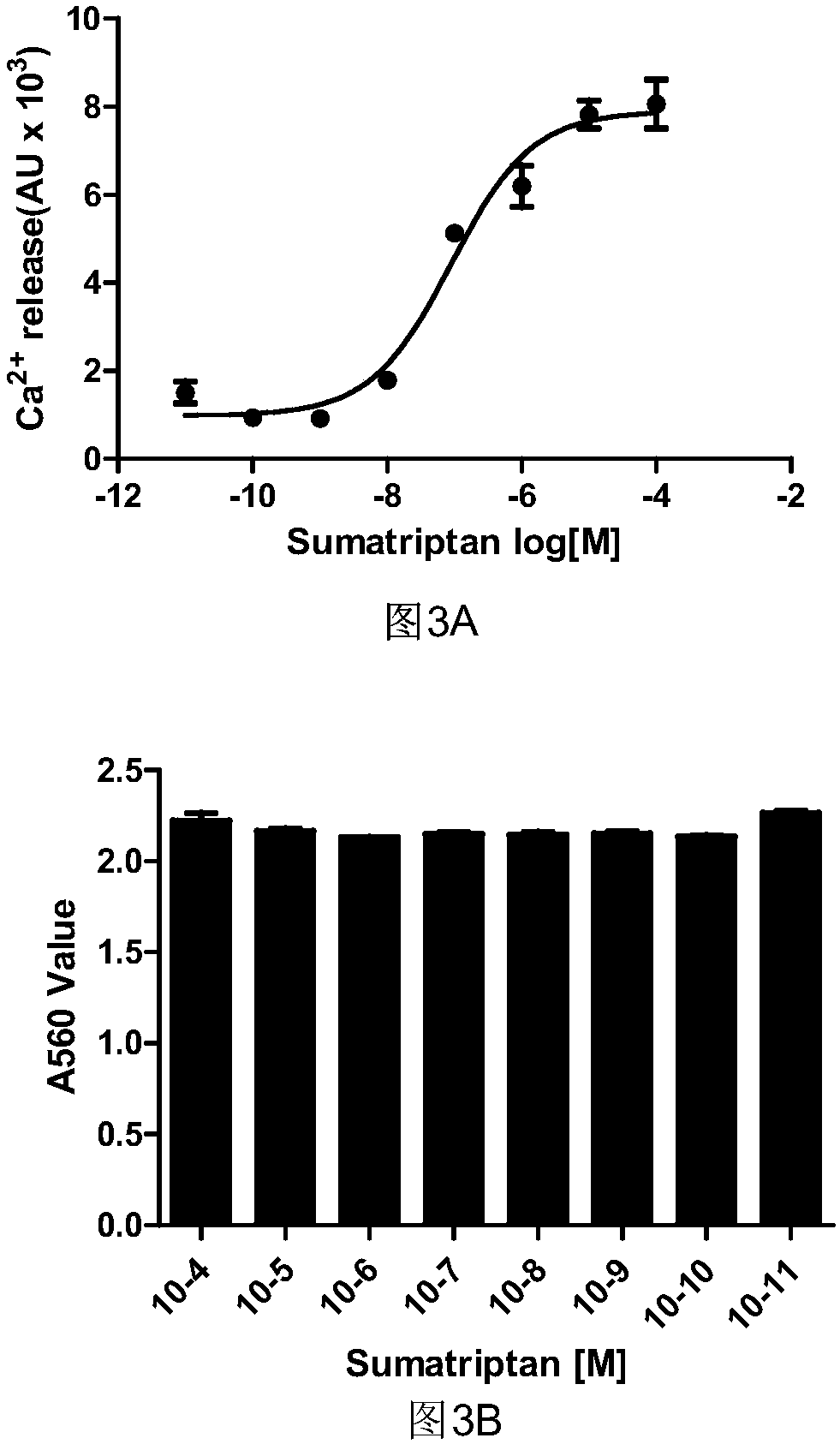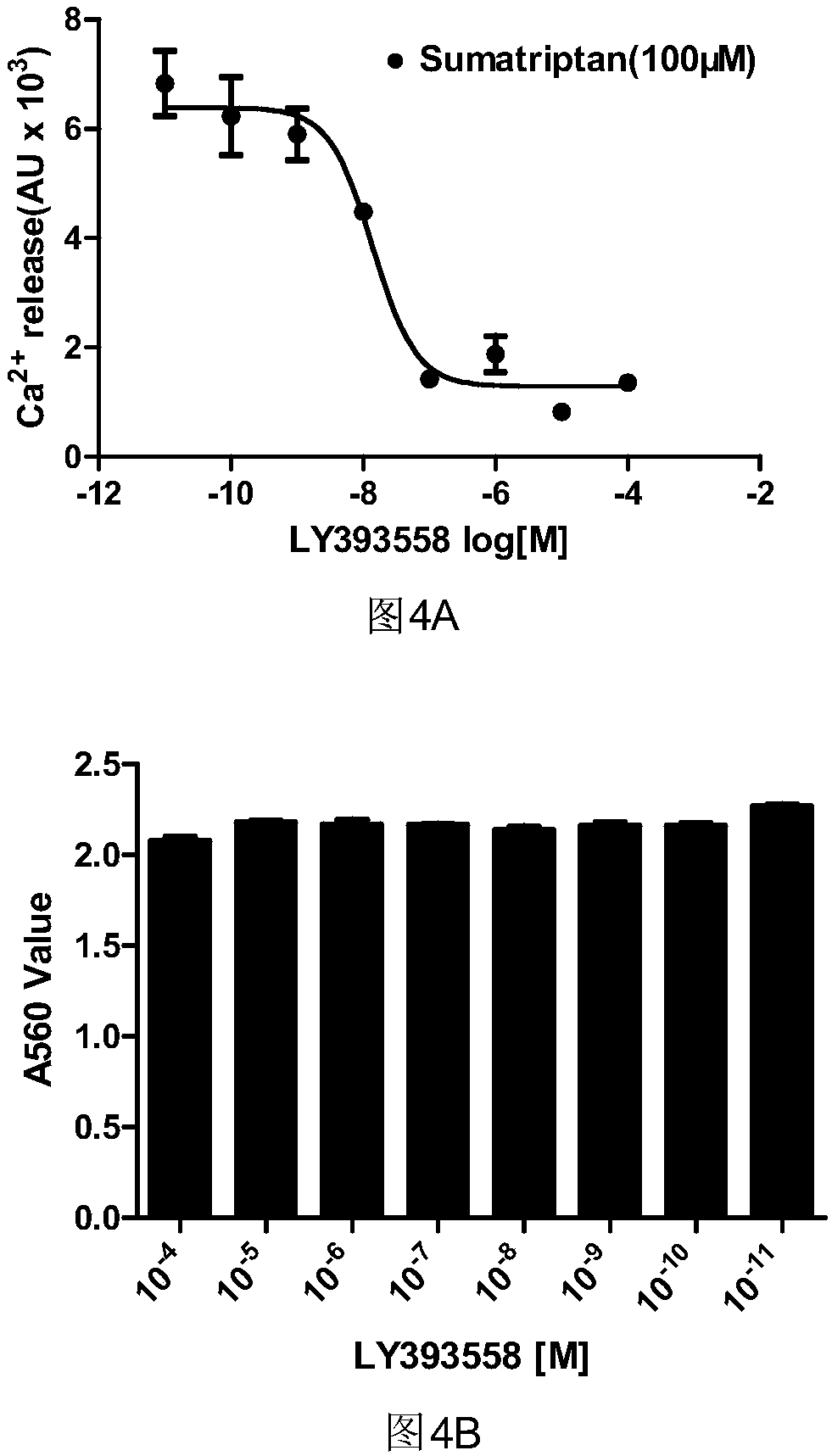Cell model and constructing method thereof, and applications of cell model in screening active substances targeting serotonin receptor
A cell model, cell technology, applied in the fields of genetic engineering and molecular pharmacology
- Summary
- Abstract
- Description
- Claims
- Application Information
AI Technical Summary
Problems solved by technology
Method used
Image
Examples
Embodiment 1
[0031] The construction of embodiment 1 cell model
[0032] The cell model was established using Chinese hamster ovary cells (CHO) as recipient cells. CHO cells were cultured in F12 medium containing 10% fetal bovine serum at 37°C, 5% CO 2 cultured in an incubator.
[0033] (1) Recombinant plasmid construction
[0034] Use the human 5-HT1BR cDNA sequence to amplify to obtain the target gene 5-HT1BR, connect the amplified 5-HT1B gene and the pcDNA5 / FRT expression vector by ligase, and transform Escherichia coli; amplify, extract plasmid DNA, Extraction and sequencing were performed to identify positive clones, and the positive clones identified correctly were recombinant plasmids, named pcDNA5 / FRT-5-HT1BR.
[0035] (2) Transfection of recombinant plasmids into CHO cells
[0036] Preparation of DNA and liposome (Lipofectin2000) mixture (60mM petri dish)
[0037] A solution:
[0038] Recombinant plasmid pcDNA5 / FRT-5-HT1BR 0.8μg
[0039] Plasmid pOG44 expressing recombinase...
Embodiment 2
[0051] Embodiment 2 Cell model of the present invention is used for the specificity of drug screening
[0052] 5-HT1BR is a Gi / o-coupled G protein-coupled receptor. After activation, it inhibits the production of cAMP by inhibiting adenylyl cyclase (AC), so the activation of 5-HT1BR can be detected by detecting the production of cAMP ; In addition, the Gqi9 chimeric G protein can be transfected in this cell line, and the 5-HT1 B The signal activated by R is coupled to the PLC signaling pathway, which in turn promotes the release of intracellular calcium ions, and thus can be detected by detecting Ca 2+ Release to determine the activation of 5-HT1BR. In this example, in order to identify cell lines that can stably express functional 5-HT1BR, the second method is used, that is, to detect Ca 2+ release.
[0053] To test the specificity of this cell model for drug screening, it was ensured that the response of the response element was regulated by changes in the activity of 5-HT...
Embodiment 3
[0073] Embodiment 3 Evaluation of the drug screening method based on the cell model of the present invention
[0074] The purpose of establishing a screening model is to screen active substances and reflect the biological activity of the substance. Therefore, it is necessary to objectively evaluate whether the screening model can accurately reflect the biological activity of the test substance. There are many indicators to evaluate the quality of a screening model, such as model stability, sensitivity, specificity, etc. In addition, in order to make the model meet the requirements of screening, quantitative evaluation of the screening model is also required, mainly to analyze whether the model can effectively reflect the activity of the sample. The commonly used quantitative technical parameters for evaluating drug screening models are as follows:
[0075] (1) Signal to background ratio (signal to background, S / B)
[0076] The signal-to-background ratio reflects the data obt...
PUM
 Login to View More
Login to View More Abstract
Description
Claims
Application Information
 Login to View More
Login to View More - R&D
- Intellectual Property
- Life Sciences
- Materials
- Tech Scout
- Unparalleled Data Quality
- Higher Quality Content
- 60% Fewer Hallucinations
Browse by: Latest US Patents, China's latest patents, Technical Efficacy Thesaurus, Application Domain, Technology Topic, Popular Technical Reports.
© 2025 PatSnap. All rights reserved.Legal|Privacy policy|Modern Slavery Act Transparency Statement|Sitemap|About US| Contact US: help@patsnap.com



